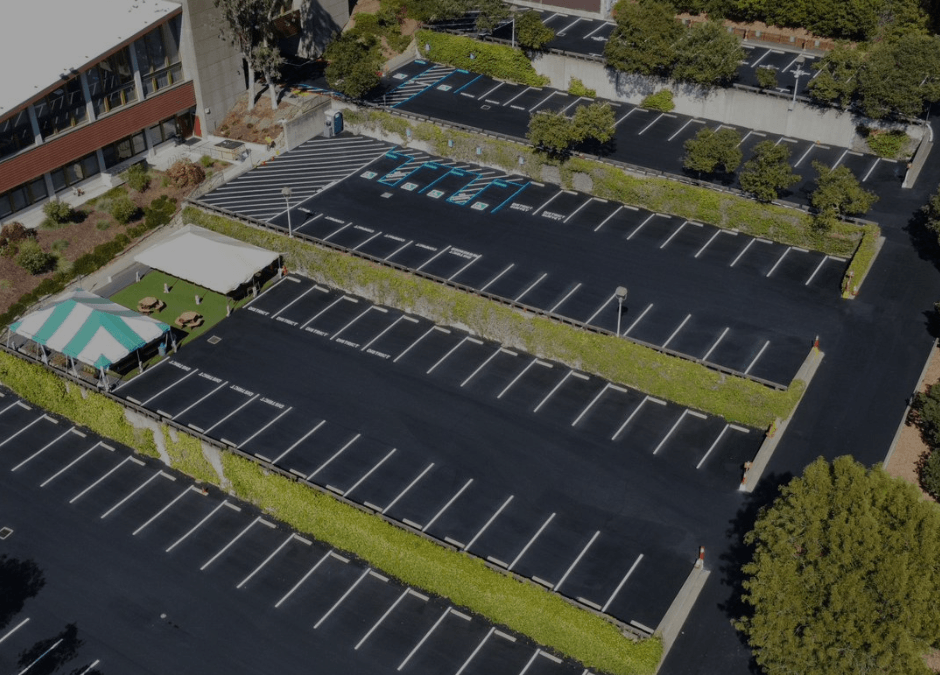In the bustling world of urban landscapes and commercial establishments, the significance of parking lots cannot be overstated. They serve as the gateway to businesses, providing the crucial first impression for customers and visitors. Amidst the hustle and bustle, one often-overlooked aspect of parking lots stands out for its pivotal role in ensuring safety, organization, and efficient space utilization: parking lot striping.
ENHANCING SAFETY
Parking lot striping serves as a visual guide for drivers, delineating lanes, spaces, and pedestrian walkways. Its primary function is to ensure the safe movement of vehicles and pedestrians within the parking area. Clearly marked lines help drivers navigate the parking lot, reducing the risk of accidents, collisions, and near misses.
Moreover, well-defined parking spaces prevent overcrowding and congestion, reducing the likelihood of accidents and conflicts between vehicles. By providing clear indications of where to park and where not to, striping contributes significantly to mitigating potential hazards.
ORGANIZATION AND EFFICIENCY
An organized parking lot is not only safer but also more efficient. Parking lot striping facilitates optimal space utilization, maximizing the number of vehicles that can be accommodated. With designated spaces and lanes, drivers can park quickly and easily, minimizing the time spent maneuvering and searching for available spots.
Furthermore, striping helps maintain order and discipline in the parking lot, preventing chaotic situations where vehicles may block access routes or encroach upon others’ spaces. This organization enhances the overall flow of traffic within the parking area, benefiting both drivers and pedestrians.
COMPLIANCE WITH REGULATIONS
In addition to safety and efficiency considerations, parking lot striping is often a legal requirement enforced by local authorities and building codes. Regulations stipulate specific standards for striping dimensions, color contrasts, and accessibility markings to ensure compliance with accessibility laws and standards such as the Americans with Disabilities Act (ADA).
Business owners and property managers must adhere to these regulations to avoid potential fines and legal liabilities. Regular maintenance and periodic repainting of parking lot stripes are necessary to uphold compliance and ensure a safe and accessible environment for all users.
AESTHETICS AND BRAND IMAGE
Beyond its functional benefits, parking lot striping also contributes to the aesthetic appeal and brand image of a business or property. Crisp, well-maintained stripes convey professionalism and attention to detail, reflecting positively on the overall perception of the establishment.
Freshly painted lines and vibrant colors create a visually appealing environment that enhances the curb appeal of the property. This attention to aesthetics can leave a lasting impression on customers and visitors, influencing their perception of the business and their likelihood of returning in the future.
CONCLUSION
In conclusion, parking lot striping plays a crucial role in ensuring safety, organization, and efficiency within commercial parking areas. By providing clear visual cues for drivers and pedestrians, striping helps prevent accidents, minimize congestion, and optimize space utilization. Moreover, compliance with regulations and attention to aesthetics contribute to the overall positive image of the business or property.
As such, regular maintenance and periodic repainting of parking lot stripes are essential investments for property owners and managers. By prioritizing the upkeep of parking lot striping, businesses can create a welcoming and safe environment that enhances the overall customer experience and fosters long-term success.

